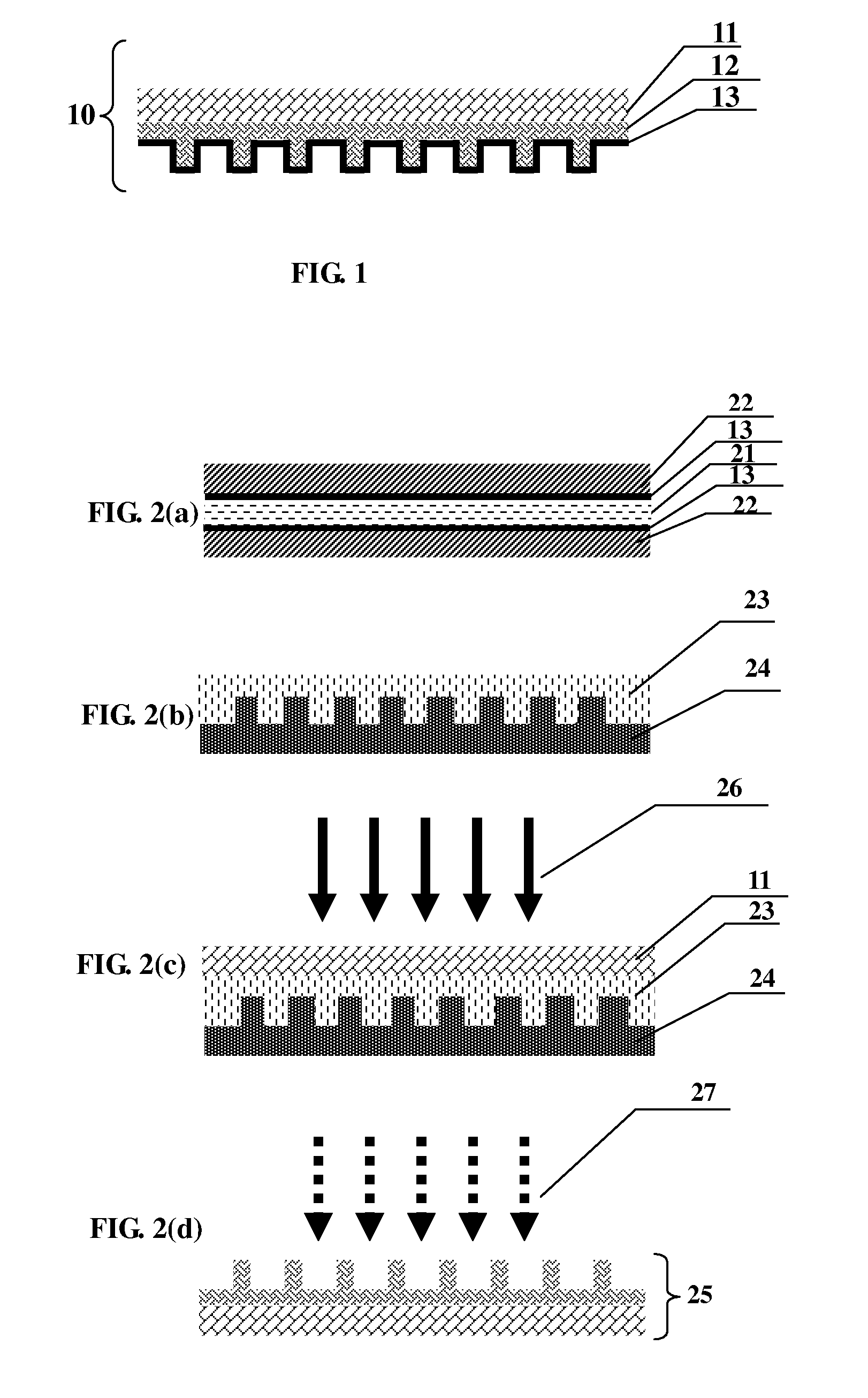Flexible nanoimprint mold, method for fabricating the same, and mold usage on planar and curved substrate
a nanoimprint and mold technology, applied in the field of nanoimprint technology, can solve the problems of limiting the application, difficult to extend current nanoimprint lithography to a curved substrate, stiff molds cannot provide conformal contact with non-planar surfaces, etc., and achieve the effect of ultra-fine resolution pattern transfer
- Summary
- Abstract
- Description
- Claims
- Application Information
AI Technical Summary
Benefits of technology
Problems solved by technology
Method used
Image
Examples
Embodiment Construction
[0023]Referring to FIG. 1 for the schematic structure of a flexible mold 10 for imprinting planar and curved substrate according to a preferred embodiment of the present invention, a flexible mold 10 comprises a double-layer structure: an ultra-thin rigid patterning feature layer 12 and a thicker elastic polymer support 11. A self-assembled monolayer (SAM) 13 of trichloro-perfluoroalkyl silane is coated onto the rigid patterning feature layer 12. The thickness of the rigid patterning feature layer 12 can be adjusted from 30 nm to 500 nm according to the height of the protruding and recess features on the mold master. The thickness of the elastic polymer support 11 can be adjusted from 0.1 mm to 3 mm. The rigid patterning feature layer 12 is chemically coupled to the elastic support 11. The rigid and elastic properties of the flexible mold layers are indicated by their tensile modulus. The tensile modulus of the rigid patterning feature layer 12 is preferably more than 20 N / mm2 as a ...
PUM
| Property | Measurement | Unit |
|---|---|---|
| Length | aaaaa | aaaaa |
| Length | aaaaa | aaaaa |
| Pressure | aaaaa | aaaaa |
Abstract
Description
Claims
Application Information
 Login to View More
Login to View More - R&D
- Intellectual Property
- Life Sciences
- Materials
- Tech Scout
- Unparalleled Data Quality
- Higher Quality Content
- 60% Fewer Hallucinations
Browse by: Latest US Patents, China's latest patents, Technical Efficacy Thesaurus, Application Domain, Technology Topic, Popular Technical Reports.
© 2025 PatSnap. All rights reserved.Legal|Privacy policy|Modern Slavery Act Transparency Statement|Sitemap|About US| Contact US: help@patsnap.com



